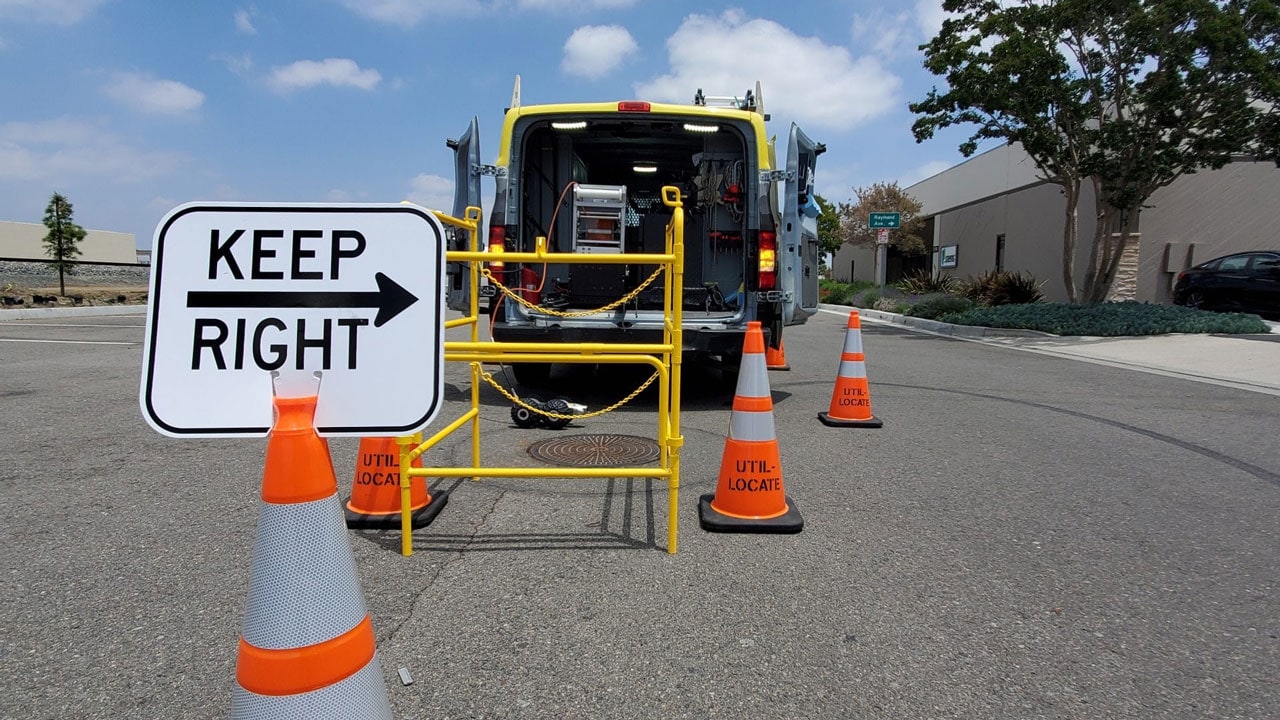The job of utility locating service involves the use of a wide range of equipment. Depending on the type of work being done and the utility type being sought, locators choose the appropriate locating tool. Methods that locate utilities accurately ensure that excavation crews and communities are safe from injury due to striking utility lines.
Locating underground utilities, such as sewer and gas lines, is a process of finding and marking these assets—all of which protect the public from accidents like explosions caused by buried gas lines or electrocution caused by striking buried utilities.
Anyone planning to do any kind of digging in the U.S. is required to contact the state’s 811 centers to locate public utilities before digging a site. Excavators must also hire professional location services to locate all non-public assets due to the presence of private utilities on most construction sites.
3 Best Utility Locating Systems
Underground pipes, water lines, cables, batteries, power lines, metallic objects, and non-metallic objects can’t all be found by the same utility locator device. The key to detecting all types of underground utility infrastructure is the choice of tools that complement each other. Utility locating equipment in the market can be broken down into three types.
1. Ground Penetrating Radar Technology
Utilities buried underground can be located using ground-penetrating radar (GPR). A transmitter and a receiver are usually included in different types of utility-locating equipment units.
Radiation from the transmitter penetrates the ground through ground-penetrating radar. The receiver receives a signal when it is reflected off of something in the underground path, while signals are translated into images of objects beneath the surface by the receiver’s software.
2. Electromagnetic Profiling Locators
A conductive utility can only be located with an electromagnetic (EM) locator. The frequencies are transmitted from the equipment’s transmitter onto the ground. The receiver begins to identify and track the location of the asset once the frequency is transmitted through a metallic utility.
Additionally, it is capable of establishing the difference between different lines as well as finding utilities in many cases.
Tracer wire is commonly run along or atop gas pipelines to make them easy to locate because most are constructed from medium or high-density polyethylene pipe. An operator in these situations can make a connection and induce a current on a tracer wire and locate it by having access to the system.
3. Radiofrequency Pipe and Cable Locators
The use of radiofrequency (RF) locators for locating conductive utilities is also common. In the same way that EM equipment uses high frequencies to locate buried assets, a radio frequency locator uses high frequencies to gain access to such assets.
There is also the possibility that pipe locators can detect non-metal utilities buried alongside one if tracer wires are buried with them.
What is the Best Type of Utility Locating Equipment to Use?
The primary method of utility location is by using electromagnetic locators. Ground penetrating equipment is much slower, easier to operate, and less accurate than electromagnetic equipment, which is limited to finding metallic objects only.
However, GPR can also locate non-conductive materials, but an experienced locator in the field needs to be able to properly identify all kinds of assets.
Together, GPR and EM tools maximize their potential and provide accuracy and complete location of underground utilities with ease. The type of equipment to use for utility locators must also be determined by the environmental and area conditions.
A number of factors play into the performance of locating equipment. For example, soil conductivity and soil moisture levels.
Make Your Next Project Easy with Utility Locating Services
You can save tons of time and make challenging projects simpler with an underground utility locating service, regardless of whether you’re a professional or a novice. The most important benefit of using these devices, however, is that they can help avoid any electrical or natural gas disturbances during the project.
This is something you should leave to the professionals. At Util-Locate, we generate accurate data using high-tech ground mapping tools, CCTV line installation, and licensed expertise.
To find out what our services can do for you, get in touch with our team at 866-638-1075 at Util-Locate today!

